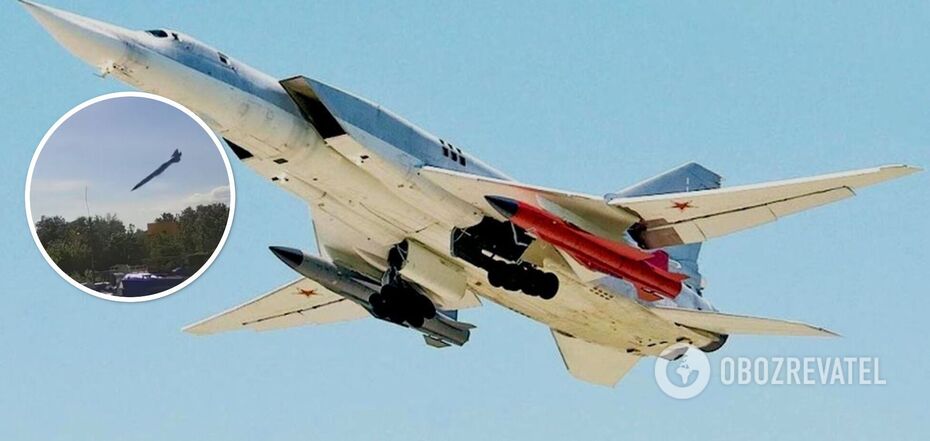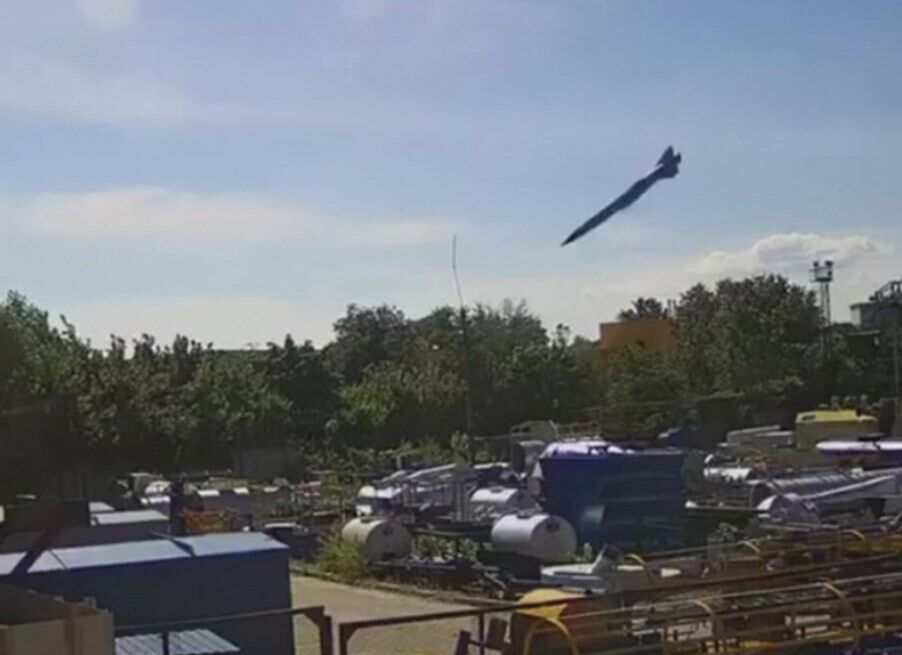War in Ukraine
Military observer Kovalenko: Russia plans to "improve" weapon of terror. What is the threat of X-22 missiles with cluster warheads
Recently, a document, according to which the Dubnensky Machine-Building Plant JSC, which manufactured and is currently repairing and modernizing X-22/32 missiles after long-term storage, was tasked with integrating a cluster warhead into this weapon. This task was set back in 2023, but for what purpose does the Russian Defense Ministry intend to carry out such modernization and what threats does it pose to Ukraine?
Read more about this in the material of the joint project of OBOZ.UA and the Suprotyv Information Resistance group.
What are X-22 missiles?
To begin with, we should pay attention to the X-22 missile itself, which has never been intercepted by Ukrainian air defense. This is not because these missiles are so elusive and have no alternatives, but because they have not yet flown into the range of Patriot and SAMP/T SAMs, which in theory have all the capabilities to intercept the X-22.
The shortage of "modern" and "high-precision" missile weapons forced the command of the Russian occupation forces to unpack the warehouses with Soviet X-22 missiles in 2022. Since May 2022, they have intensified the use of these missiles, which were adopted in 1968 and, even by the standards of that time, were not very good at their performance, especially in terms of accuracy and reliability of the fuel system.
In fact, from the very first days of the resumption of the use of the X-22, the Russians became convinced that the problems of these missiles had not evaporated. Not only were they just as inaccurate and subject to high propulsion system failure rates but they also demonstrated a critical dependence of accuracy and reliability on range.
In fact, using this missile at its maximum range (600 km) increased the deviation from the target by an order of magnitude. The maximum deviation recorded for the entire period of the war was three kilometers! From May to June 2022, more than 10 X-22 missiles failed to hit their targets.
The range also affected the reliability of the X-22 fuel system. The longer the missile flew, the higher the risk of engine failure in flight. During the shelling of the Odesa region in 2022, at least two X-22s fell into the sea due to a fuel system failure.
As a result, the Tu-22M3 long-range bomber-missile carrier from the 52nd Heavy Bomber Aviation Regiment (stationed in Shaykovka) in the Kursk region of the Russian Federation began to conduct regular and very intensive training flights and launches of the X-22 at the Dubrovichi aviation training ground in the Ryazan region since June 2022. Such actions have shown that the conditionally effective range of the X-22 does not exceed 150-200 km: the rest of the range dramatically increases the likelihood of fuel system failure and deviation from the target.
I've reminded you what the X-22 missiles are, but what if they receive a cluster warhead? What kind of threat would they pose to us then?
X-22 with a cluster warhead
Cluster warheads were very popular in the U.S.S.R., especially in missiles and rockets for MLRS, as almost all Soviet weapons were characterized by low accuracy. The use of cluster warheads made it possible to increase the possibility of hitting a target, albeit with a smaller charge.
It is quite logical that the X-22, known for its low accuracy, could be equipped with a cluster warhead. Of course, we cannot talk about using the entire volume of its native warhead of 960 kg, but its filling, theoretically, can exceed several hundred identical submunitions, such as 9N210.
The 9N210 is the main high-explosive fragmentation warhead of the 9M55K Smerch and 9M27K Uragan MLRS. One such submunition weighs 1.85 kg with an explosive weight of 300 grams. At the same time, the 9M55K1 warhead (weighing 243 kg) contains 72 such elements, or 133 kg. That is, 110 kg of the warhead volume of a rocket projectile is occupied not by the warhead but by related structural elements and empty space.
Thus, the estimated net weight of submunitions for the X-22 warhead, using the 9N210 as an example, can be about 600 kg and contain more than 300 elements identical to the 9N210. But I should point out that all these figures depend on how ergonomically and rationally the space is used by Russian "specialists".
And I emphasize: I do not claim that the X-22 will be filled with 9H210 or 9H235, I used them only to illustrate the possibilities of forming a cluster warhead.
Now the most important thing is to determine what targets X-22s will be used to hit and how dangerous will they be?
In the almost two years since the start of the full-scale invasion, the Russian-backed militants have rarely used X-22s against military targets. They have used them mainly to strike civilian objects, energy infrastructure, and warehouses.
The most famous terrorist strikes using X-22 were on June 27, 2022, against the Amstor shopping center in Kremenchuk, July 1, 2022, against a residential apartment building and recreation center in Serhiivka, and January 14, 2023, the most destructive and bloody strike was against a multi-story residential building in Dnipro, killing more than 45 people and leaving 1,700 homeless.
It is unlikely that Russia will radically change the tactics of using these missiles, although given the number of submunitions, this weapon could well be used against a concentration of Ukrainian troops or equipment as it would allow strikes over large areas. In particular, the Russian occupation forces may try to launch these missiles at Ukrainian airfields, but such facilities, which are in constant use, are beyond the effective use of the X-22.
All of this indicates that if cluster warheads are successfully integrated into X-22 missiles, the Russian Federation will continue to use them in the rear of Ukraine, including the peaceful cities. On the one hand, the cluster warhead reduces the effect of point destruction, but on the other hand, it leads to more micro-destruction over a larger area.
In other words, the Russians have moved from pseudo-point destructive impact to covering a larger area of destruction. This, for example, can be used by them in attempts to strike at energy infrastructure, during which there is a very high probability of missing the object with an X-22 missile, but if you add numerous explosives...
I emphasize that the use of cluster munitions in urban areas is a war crime and the risk of civilian casualties is growing. Therefore, this modernization cannot be called anything other than an improvement of the weapon of terror against the civilian population.





























